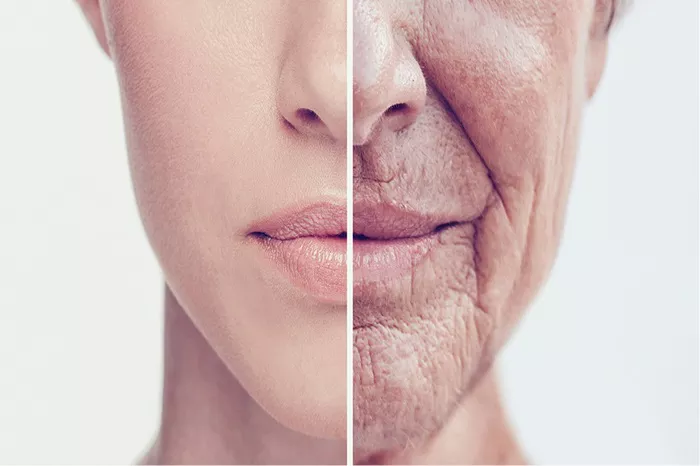Wrinkles are a natural part of aging that many people seek to understand and manage. With the ever-growing emphasis on beauty and skincare, knowing when wrinkles typically begin to appear can help in planning proactive skincare regimens and anti-aging treatments. In this article, we will explore the factors influencing wrinkle development, the typical ages at which they appear, and the strategies to minimize their impact.
Factors Influencing the Onset of Wrinkles
Genetic Predisposition
Family History: Genetics play a crucial role in determining when wrinkles appear. If your parents or grandparents developed wrinkles early, you might too.
Skin Type: Some skin types are more prone to wrinkles. For example, people with fair skin tend to get wrinkles earlier due to lower levels of melanin, which provides natural protection against UV radiation.
Environmental Exposure
Sun Exposure: UV rays are a major cause of premature aging. Prolonged exposure can lead to earlier wrinkle formation, particularly on the face, neck, and hands.
Pollution: Environmental pollutants can damage skin cells and accelerate aging. Those living in urban areas may experience wrinkles sooner than those in rural areas.
Lifestyle Choices
Smoking: Smoking accelerates the aging process of the skin. Chemicals in cigarettes cause collagen breakdown and skin elasticity reduction.
Diet and Nutrition: A diet high in sugar and processed foods can lead to glycation, a process that damages collagen and elastin in the skin.
Facial Movements
Repetitive Expressions: Facial expressions such as frowning, squinting, or smiling can cause fine lines and wrinkles over time. These movements create creases in the skin that deepen with age.
Typical Ages for Wrinkle Appearance
Early Signs in Your 20s and 30s
Expression Lines: Many people notice the first signs of aging in their late 20s and early 30s, typically around the eyes (crow’s feet) and forehead.
Dehydration Lines: In your 20s, you might experience dehydration lines, especially if you have dry skin or do not moisturize adequately.
Midlife Changes in Your 40s
Collagen Decline: Around the age of 40, the skin starts to lose collagen at a faster rate, leading to more noticeable wrinkles and a loss of firmness.
Increased Visibility: Fine lines that started in earlier decades become more pronounced in the 40s.
Advanced Wrinkling in Your 50s and Beyond
Deeper Wrinkles: By the time you reach your 50s, deeper wrinkles, especially around the mouth and on the neck, are common.
Hormonal Changes: Menopause in women accelerates the loss of skin elasticity, leading to sagging and wrinkles.
See also: What Are Wrinkles?
Strategies to Minimize Wrinkles
Protect Your Skin from the Sun
Sunscreen Use: Regular use of broad-spectrum sunscreen with at least SPF 30 can prevent premature aging. Apply it daily, even on cloudy days.
Protective Clothing: Wearing hats, sunglasses, and protective clothing can reduce sun exposure and the risk of wrinkles.
Adopt a Healthy Lifestyle
Quit Smoking: Stopping smoking can improve skin health and slow down the formation of wrinkles.
Balanced Diet: Eating a diet rich in antioxidants, vitamins, and omega-3 fatty acids can help maintain skin elasticity and hydration.
Effective Skincare Routine
Moisturizing: Keeping the skin well-hydrated can prevent dehydration lines and improve the skin’s texture.
Anti-Aging Products: Incorporating products with retinoids, peptides, and antioxidants can stimulate collagen production and reduce the appearance of wrinkles.
Professional Treatments
Dermal Fillers and Botox: These treatments can temporarily reduce the appearance of wrinkles and fine lines.
Laser Therapy: Laser treatments can help stimulate collagen production and reduce the appearance of wrinkles.
Emerging Trends in Anti-Aging
Innovative Skincare Ingredients
Hyaluronic Acid: Known for its ability to retain moisture, hyaluronic acid is becoming a staple in anti-aging skincare products.
Niacinamide: This ingredient helps improve skin texture and tone, making it a popular choice in anti-aging formulations.
Non-Invasive Procedures
Microneedling: This procedure involves creating tiny punctures in the skin to stimulate collagen production, improving skin texture and reducing wrinkles.
Radiofrequency Treatments: These treatments use energy to heat the skin’s deeper layers, stimulating collagen and elastin production.
Conclusion
Aging is a natural process, and wrinkles are a part of it. Understanding when they might appear and how to manage them can help you maintain healthy, youthful-looking skin for longer. By adopting a proactive approach to skincare and lifestyle, you can minimize the impact of wrinkles and embrace the aging process with grace and confidence.
FAQ
1.Is it normal to have wrinkles at 20?
It’s not typical to have noticeable wrinkles at 20. However, early wrinkles can occur due to genetics, sun exposure, or lifestyle factors.
2.How to avoid wrinkles?
To help prevent wrinkles, practice good skincare: use sunscreen daily, stay hydrated, maintain a healthy diet, and avoid smoking.
3.Why do some people not get wrinkles?
Genetics play a major role; some people have genes that result in more resilient skin. Additionally, good skincare and a healthy lifestyle contribute to fewer wrinkles.
4.Can you delay aging?
While you can’t stop aging, you can delay visible signs by adopting healthy habits, such as a balanced diet, regular exercise, and effective skincare routines.
5.At what age are your eyes the best?
Generally, visual acuity is at its peak in late teens to early 20s. After this, eyes may start to experience changes due to aging.
Related topic:
12 Best Eye Creams for Wrinkles 2024
Is Avocado Good For Face Wrinkles?


